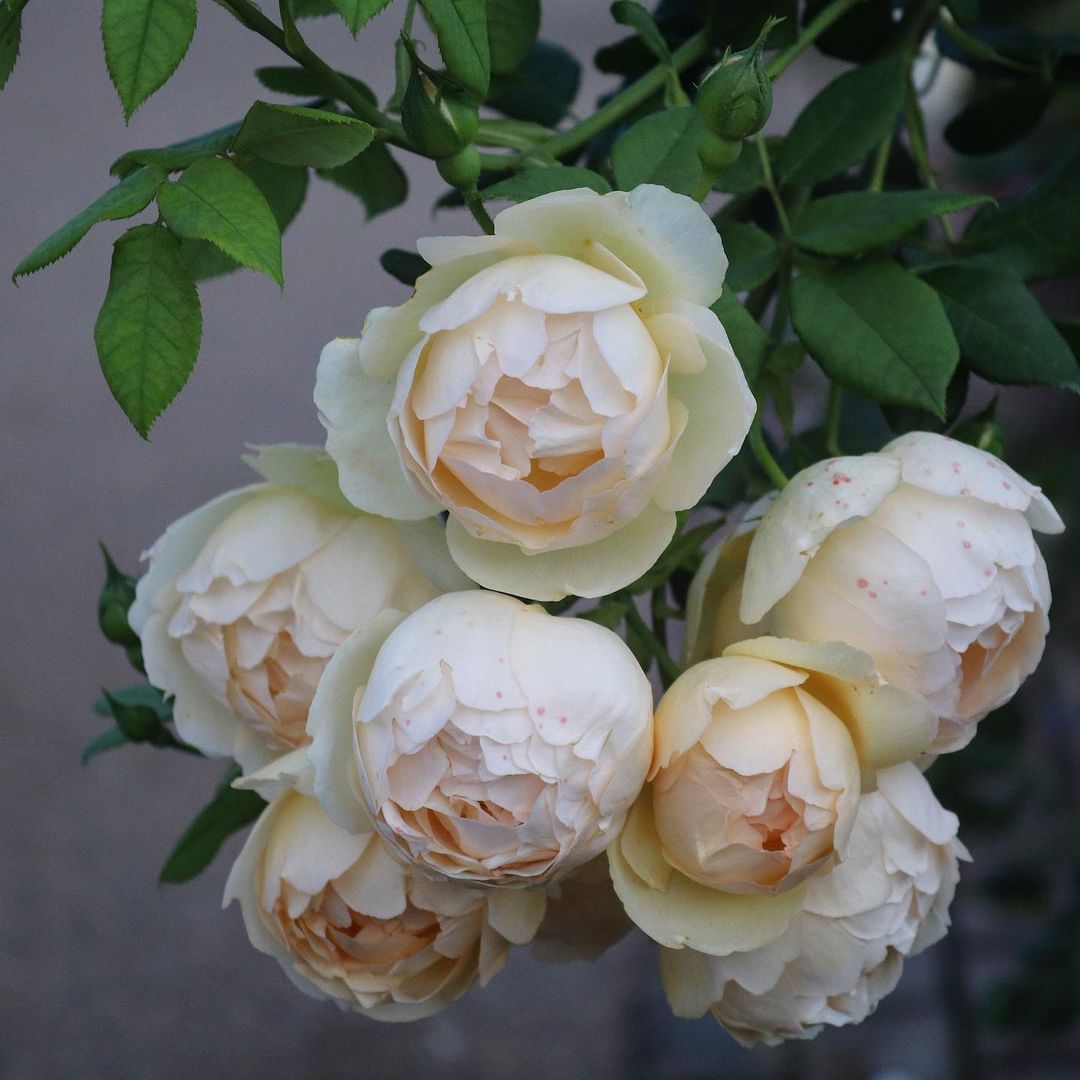Botrytis Control On Roses: Preserving the Beauty Amidst the Threat
Roses, with their timeless elegance and delicate petals, embody nature’s artistry in gardens worldwide. Yet, lurking amidst this beauty is a silent adversary: Botrytis cinerea, the dreaded gray mold that can swiftly tarnish their splendor. As gardeners and enthusiasts alike tend to their precious blooms, the battle against Botrytis becomes paramount.
In the delicate dance of cultivation, maintaining the health and vigor of roses demands vigilant care. Botrytis, fueled by cool, damp conditions, stealthily infiltrates through wounded petals or aging blooms, threatening entire gardens with its insidious spread. Effective control measures, from cultural practices to targeted fungicides, are pivotal in safeguarding these floral treasures. Every petal saved from the grasp of Botrytis preserves not just a flower, but a testament to resilience and horticultural mastery.
Join us as we delve into the nuanced strategies and timeless wisdom that protect roses from Botrytis, ensuring their enduring allure in gardens for generations to come.
Tips For Botrytis Control On Roses
We’ll discuss the topic step by step. So, bear with us, and let’s dive into it:

What Is Botrytis?
Botrytis cinerea, commonly known as gray mold, is a fungal pathogen that poses a significant threat to various plants, including roses. Here are the key points about Botrytis:
- Fungal Characteristics:
- Botrytis cinerea is a necrotrophic fungus, meaning it derives nutrients from dead or dying plant tissues.
- It produces airborne spores that spread easily, particularly in cool, humid conditions.
- Impact on Plants:
- Botrytis infects a wide range of host plants, causing a grayish mold to form on affected tissues.
- It primarily attacks weakened or senescent tissues, such as fading flowers or injured plant parts.
- Environmental Factors:
- Thrives in conditions of high humidity and moderate temperatures, typically between 15-25°C (59-77°F).
- Spreads rapidly in crowded plantings or where airflow is restricted.
Understanding the lifecycle and environmental preferences of Botrytis is crucial for effective management and control in agricultural and horticultural settings, particularly in protecting valuable crops like roses from its damaging effects.
Identification of Botrytis
Understanding the Characteristics and Signs of Botrytis
Botrytis cinerea, commonly known as gray mold, presents a formidable challenge to gardeners and farmers worldwide. This fungal pathogen thrives in cool, humid conditions, making it particularly prevalent in temperate climates during periods of high moisture. Here are key identifiers and signs to recognize Botrytis:
- Appearance: Initially, Botrytis appears as fluffy, grayish-white mold on affected plant parts, such as petals, stems, and leaves.
- Behavior: It spreads rapidly, especially in dense plantings or where air circulation is poor.
- Impact: Botrytis infections can lead to severe economic losses in agricultural crops, affecting yield and quality.
Early detection is crucial for effective management. Regular scouting of susceptible plants, like roses, and prompt removal of infected plant material are essential practices to mitigate the spread of Botrytis. Implementing cultural controls, such as improving air circulation and reducing plant moisture, along with targeted fungicidal treatments, offers the best defense against this pervasive fungal threat.
Understanding the Biology and Life Cycle of Botrytis
Overview of Botrytis cinerea
Botrytis cinerea, commonly known as gray mold, is a fungal pathogen notorious for its broad host range and devastating impact on crops worldwide. It thrives in cool, humid environments, making it particularly troublesome in temperate regions.
Life Cycle
Botrytis undergoes a complex life cycle that includes both sexual and asexual stages, allowing it to adapt and spread efficiently:
- Spore Formation and Dissemination: The fungus produces abundant conidia (asexual spores) on infected plant tissues, which are easily spread by wind, water, and even insects.
- Infection and Colonization: Conidia germinate on susceptible plant surfaces, penetrating through wounds or natural openings. Once inside, the fungus secretes enzymes to break down plant tissues, facilitating its growth.
- Disease Development: Under optimal conditions (cool and moist), Botrytis quickly spreads within plant tissues, causing characteristic grayish mold and decay.
- Survival Structures: During unfavorable conditions, Botrytis forms sclerotia, survival structures that endure harsh environments and initiate new infections when conditions improve.
Understanding these aspects of Botrytis biology is crucial for implementing effective control strategies, emphasizing prevention, cultural practices, and targeted fungicide applications tailored to its life cycle stages.
Organic Control Methods of Botrytis on Roses
Cultural Practices
Cultural practices form the foundation of organic Botrytis control on roses, leveraging proactive measures to prevent fungal infections. Key strategies include:
- Pruning Techniques: Prune roses to improve air circulation and reduce humidity, minimizing favorable conditions for Botrytis development.
- Watering Management: Water at the base of plants in the morning to allow foliage to dry quickly, preventing prolonged moisture that encourages fungal growth.
- Sanitation: Remove and dispose of infected plant debris promptly to prevent spores from overwintering and spreading in subsequent seasons.
Physical Methods
Physical methods provide non-chemical alternatives to combat Botrytis cinerea effectively. These methods include:
- Mulching: Apply organic mulch around roses to prevent soil splash onto lower leaves, reducing the risk of infection.
- Air Circulation: Space roses adequately to promote airflow between plants, minimizing humidity and creating an inhospitable environment for Botrytis.
- Covering: Use covers during rainy periods to shield roses from prolonged wetness, a primary factor in Botrytis infection.
Biological Controls
Biological controls harness natural antagonists to suppress Botrytis outbreaks organically:
- Beneficial Microorganisms: Apply biofungicides containing antagonistic fungi or bacteria that compete with Botrytis for nutrients and space.
- Predatory Organisms: Introduce beneficial insects like ladybugs or lacewings that prey on Botrytis spores and larvae, reducing disease pressure.
- Companion Planting: Cultivate plants that emit natural fungicidal compounds or attract beneficial insects to deter Botrytis from roses.
These organic methods offer sustainable solutions, preserving rose health while reducing environmental impact compared to conventional fungicides.

Effective Strategies for Controlling Botrytis in Greenhouse Ornamentals
Botrytis cinerea poses a significant threat to greenhouse ornamentals, where conditions often favor its rapid spread. This fungal disease, commonly known as gray mold, thrives in humid environments and can devastate crops if left unchecked.
Understanding Botrytis in Greenhouse Settings
In greenhouses, where humidity levels are carefully regulated for optimal plant growth, Botrytis finds an ideal habitat. The fungus spreads through spores carried by air currents or water splashes, infecting susceptible plants upon contact. Ornamentals such as roses, gerbera daisies, and carnations are particularly vulnerable.
Key Control Measures
- Cultural Practices:
- Proper Ventilation: Enhances air circulation to reduce humidity pockets.
- Sanitation: Regularly remove dead plant material to eliminate fungal reservoirs.
- Spacing: Ensure adequate spacing between plants to minimize humidity buildup.
- Chemical Treatments:
- Fungicides: Apply fungicides preventively or at the first signs of infection.
- Botanical Treatments: Consider natural fungicides like neem oil for organic cultivation.
- Environmental Management:
- Humidity Control: Monitor and adjust humidity levels to discourage fungal growth.
- Temperature Control: Maintain optimal temperatures to inhibit Botrytis development.
Implementing a comprehensive management plan tailored to greenhouse conditions is crucial for effectively combating Botrytis and safeguarding ornamental crops throughout their growth cycle.
Understanding Fungicides for Botrytis Control
Fungicides play a critical role in combating Botrytis cinerea, a pervasive fungal pathogen notorious for its ability to devastate crops and ornamental plants like roses. These chemical agents are specifically formulated to inhibit fungal growth and reduce disease severity, thereby safeguarding agricultural yields and preserving aesthetic value in horticulture.
Fungicides function through various modes of action, such as disrupting fungal cell membranes or interfering with enzymatic processes essential for fungal development. They are applied preventatively or curatively, depending on the stage of infection and the specific characteristics of the crop or plant being treated.
In agricultural settings, fungicides for Botrytis control are pivotal for ensuring crop health and maximizing yields. Studies have shown significant efficacy of certain fungicide classes, such as triazoles and strobilurins, in managing Botrytis outbreaks. Application timing and dosage are critical factors influencing their effectiveness, with integrated pest management strategies emphasizing judicious use to mitigate resistance development.
As global agricultural practices evolve, ongoing research continues to refine fungicide formulations and application techniques, aiming to optimize efficacy while minimizing environmental impact and promoting sustainable farming practices.
Frequently Asked Questions
How does Botrytis affect roses?
Botrytis cinerea, commonly known as gray mold, affects roses by causing fuzzy grayish patches on petals and leaves. It thrives in cool, humid conditions, entering plants through wounds or aging flowers. Left unchecked, it can lead to rapid decay and loss of blooms.
What are the symptoms of Botrytis infection in roses?
Symptoms of Botrytis infection include brown spots on petals, fuzzy gray mold covering flowers, and rapid wilting of affected blooms. Leaves may develop water-soaked lesions that eventually turn gray and papery. Infected buds may fail to open fully, impacting the overall aesthetics of the plant.
How can I prevent Botrytis in my rose garden?
Prevent Botrytis by promoting good air circulation around plants, avoiding overhead watering, and pruning roses to improve ventilation. Remove and dispose of any infected plant debris promptly. Applying fungicides preventatively, especially during periods of high humidity, can also help protect roses from Botrytis.
What fungicides are effective against Botrytis on roses?
Fungicides containing active ingredients like captan, thiophanate-methyl, or iprodione are effective against Botrytis on roses. Always follow label instructions carefully when applying fungicides to ensure safe and effective use. Rotate different types of fungicides to prevent resistance buildup in the fungal population.
Conclusion
In the delicate realm of rose cultivation, combating Botrytis cinerea proves essential to preserving their timeless beauty. By implementing diligent cultural practices such as proper pruning and adequate air circulation, gardeners can significantly reduce the risk of Botrytis infections.
Prompt removal of infected plant material and judicious use of fungicides further fortify defenses against this pervasive mold. Ultimately, safeguarding roses from Botrytis ensures not only their aesthetic charm but also sustains a legacy of horticultural excellence for future generations to enjoy.

I’m Shofi, a passionate gardener and blogger. I have 10+ years of experience in gardening and hold certifications in horticulture and garden design. I share my knowledge and skills through my garden blog to inspire and educate others on the joys of gardening. I try to provide valuable information and create a community for gardeners of all levels to connect and learn. My ultimate goal is to inspire others to start their own gardens and connect with nature.

